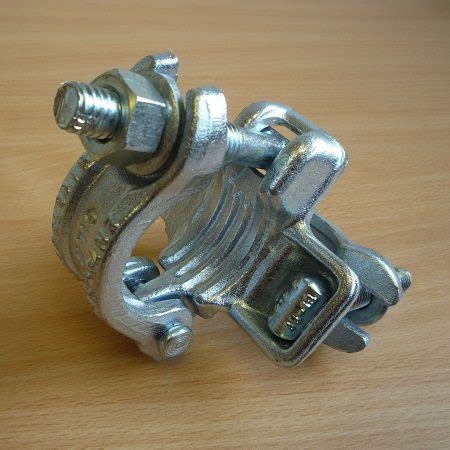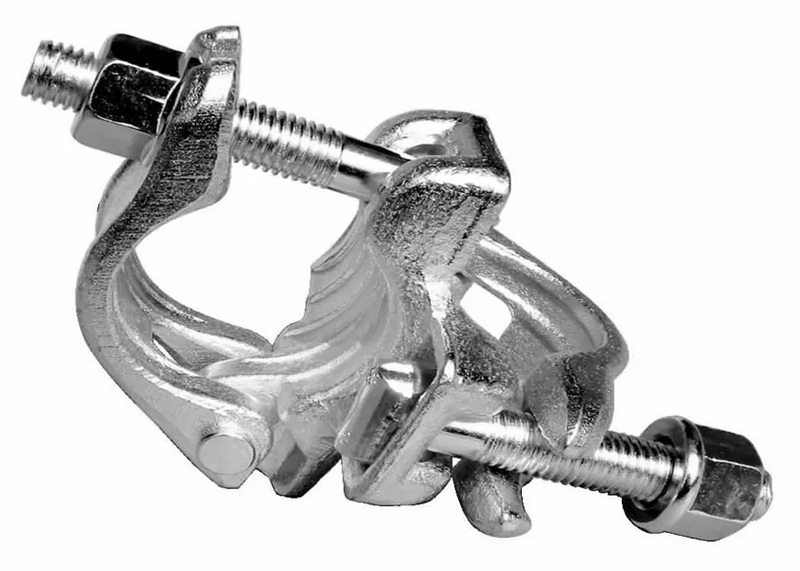Content Menu
● Introduction to Scaffolding Systems
● In-Depth Analysis of Scaffolding Types
>> 1. Tube and Coupler Scaffolding
>> 2. Double Coupler Scaffolding
>> 3. Swivel Coupler Scaffolding
>> 4. Frame Scaffolding
>> 5. Suspended Scaffolding
● Double Coupler Scaffolding vs. Other Systems: A Detailed Comparison
>> Structural Integrity
>> Cost Efficiency
>> Adaptability
● Case Studies: Double Coupler Scaffolding in Action
>> Case Study 1: High-Rise Construction in Dubai
>> Case Study 2: Historical Building Restoration
● Safety and Compliance
● Environmental and Economic Impact
>> Sustainability
>> Cost-Benefit Analysis
● Maintenance and Best Practices
>> Routine Maintenance
>> Training Requirements
● Future Trends in Scaffolding Technology
● Conclusion
● FAQ
>> 1. How does double coupler scaffolding handle seismic activity?
>> 2. Can double couplers be reused after prolonged exposure to saltwater?
>> 3. What is the maximum height achievable with double coupler scaffolding?
>> 4. Are double couplers compatible with aluminum tubes?
>> 5. How does weather affect double coupler scaffolding assembly?
● Citations:
Scaffolding is a critical element in construction, renovation, and maintenance projects, providing workers with safe access to elevated workspaces. Among the diverse scaffolding systems available, double coupler scaffolding has gained prominence for its stability, durability, and adaptability. This article explores the unique advantages of double coupler scaffolding, compares it with other scaffolding types, and evaluates its suitability for various applications. By the end, you'll understand why it's often the preferred choice for high-load projects.

Introduction to Scaffolding Systems
Scaffolding systems are categorized based on their structural design, materials, and coupling mechanisms. The primary types include:
1. Tube and Coupler Scaffolding
2. Double Coupler Scaffolding
3. Swivel Coupler Scaffolding
4. Frame Scaffolding
5. Suspended Scaffolding
Each type serves distinct purposes, but double coupler scaffolding is particularly notable for its rigidity and load-bearing capabilities.
In-Depth Analysis of Scaffolding Types
1. Tube and Coupler Scaffolding
This system uses steel or aluminum tubes connected via couplers, offering unparalleled flexibility. It's ideal for irregular structures like heritage buildings or industrial plants.
Key Features:
- Adjustable tube lengths for custom configurations.
- Compatible with swivel and double couplers.
- High versatility but requires skilled labor for assembly.
Applications:
- Complex architectural projects.
- Petrochemical plants requiring non-linear designs.
2. Double Coupler Scaffolding
Double coupler scaffolding uses specialized couplers to join vertical and horizontal tubes at fixed 90-degree angles, creating a rigid framework. This system is designed for stability in high-load environments.
Technical Specifications:
- Material: High-tensile steel with hot-dip galvanization for corrosion resistance.
- Load Capacity: Supports up to 30 kN per coupler (varies by manufacturer).
- Safety Standards: Complies with EN 74-1 and OSHA regulations.
Advantages:
- Unmatched Stability: Fixed-angle connections eliminate lateral movement.
- Durability: Resists deformation under heavy loads.
- Ease of Inspection: Simple design reduces hidden failure points.
Applications:
- High-rise construction.
- Bridge maintenance.
- Event stage scaffolding.
3. Swivel Coupler Scaffolding
Swivel couplers allow connections at any angle, making them ideal for diagonal bracing or curved structures. However, they lack the load-bearing capacity of double couplers.
Limitations:
- Not suitable for primary load-bearing joints.
- Requires frequent torque checks to maintain integrity.
4. Frame Scaffolding
A modular system using pre-welded frames, popular for quick assembly in repetitive layouts.
Comparison with Double Coupler Scaffolding:
- Speed: Faster to erect but less adaptable.
- Load Capacity: Lower than double coupler systems.
5. Suspended Scaffolding
Used for facades or window cleaning, this system hangs from rooftops via ropes or chains.
Key Difference:
- Designed for vertical mobility rather than structural support.
Double Coupler Scaffolding vs. Other Systems: A Detailed Comparison
Structural Integrity
- Double Coupler Scaffolding: Fixed 90-degree joints prevent slippage, even under dynamic loads (e.g., concrete pouring).
- Frame Scaffolding: Prone to wobbling in high-wind conditions due to pinned connections.
Cost Efficiency
- Initial Cost: Tube and coupler systems are 20–30% cheaper than double coupler scaffolding.
- Long-Term Value: Double coupler systems last 50% longer due to reduced wear on joints.
Adaptability
- Double Coupler Scaffolding: Limited to right-angle configurations but excels in standardized projects.
- Swivel Coupler Systems: Better for irregular geometries but require more maintenance.
Case Studies: Double Coupler Scaffolding in Action
Case Study 1: High-Rise Construction in Dubai
A 70-story skyscraper used double coupler scaffolding to support concrete formwork. The system's rigidity allowed safe worker movement during frequent sandstorms.
Case Study 2: Historical Building Restoration
A 19th-century cathedral in Europe combined double coupler scaffolding (for primary support) with swivel couplers (for ornate façade work). This hybrid approach balanced stability and flexibility.
Safety and Compliance
- Double coupler scaffolding must comply with:
- OSHA 1926.451 (General Requirements for Scaffolds).
- EN 12811-1 (European Standard for Temporary Works Equipment).
Critical Checks:
- Inspect couplers for cracks or corrosion before each use.
- Ensure no more than 30% of couplers bear loads in a single span.
Environmental and Economic Impact
Sustainability
- Double coupler systems use recyclable steel, reducing waste.
- Long lifespan lowers the carbon footprint compared to disposable frame systems.
Cost-Benefit Analysis
| Factor | Double Coupler Scaffolding | Frame Scaffolding |
| Initial Cost | $15,000 (per 100 units) | $10,000 |
| Maintenance (10-year) | $2,000 | $6,000 |
| Lifespan | 15 years | 8 years |
Maintenance and Best Practices
Routine Maintenance
1. Clean couplers with a wire brush to remove debris.
2. Apply anti-corrosion spray every 6 months.
3. Replace couplers showing ≥2 mm wear on clamping surfaces.
Training Requirements
Workers assembling double coupler scaffolding must undergo:
- 40-hour OSHA-certified training.
- Hands-on practice in torque application (recommended: 50 Nm for steel couplers).
Future Trends in Scaffolding Technology
- Smart Couplers: IoT-enabled sensors to monitor load distribution in real time.
- 3D Modeling: BIM software to pre-plan double coupler scaffolding layouts, reducing on-site errors.
Conclusion
Double coupler scaffolding outperforms other systems in stability, durability, and load-bearing capacity, making it indispensable for large-scale or high-risk projects. While alternatives like frame or swivel coupler scaffolding have niche uses, double coupler systems provide unparalleled safety and long-term value. As construction demands grow, innovations in materials and digital integration will further solidify its dominance.

FAQ
1. How does double coupler scaffolding handle seismic activity?
Double coupler systems absorb lateral forces through rigid joints, making them suitable for earthquake-prone regions when paired with diagonal bracing.
2. Can double couplers be reused after prolonged exposure to saltwater?
Yes, if galvanized. However, inspect for pitting corrosion and replace couplers with >10% surface damage.
3. What is the maximum height achievable with double coupler scaffolding?
Theoretically unlimited, but practical limits depend on base dimensions (e.g., a 4:1 height-to-base ratio is standard).
4. Are double couplers compatible with aluminum tubes?
No—steel couplers can deform aluminum tubes. Use only with steel tubes unless specified by the manufacturer.
5. How does weather affect double coupler scaffolding assembly?
Extreme cold can embrittle steel. Follow manufacturer guidelines for temperature thresholds (typically -20°C to +40°C).
Citations:
[1] https://safetyeducations.com/tube-and-coupler-scaffolds/
[2] https://shelterrc.com/swivel-coupler-vs-double-coupler-whats-the-difference/
[3] https://firstfence.co.uk/double-right-angle-coupler
[4] https://www.acrow.com.au/product/double-coupler/
[5] https://www.scaffoldclamps.com/blog/types-of-scaffolding-couplers
[6] https://www.tp-scaffold.com/benefits-of-tube-and-coupler-scaffolding-in-construction.html
[7] https://www.youtube.com/playlist?list=PLw3EVXNtt95NWY4MVik-Re2jL829iMvUw
[8] https://doughty-engineering.co.uk/product/scaffold-double-coupler/
[9] https://shop.leachs.com/products/scaffold-fitting-drop-forged-fixed-double-bag-25
[10] https://scaffoldersforum.com/threads/questions-about-doubles.33582/
[11] https://www.linkedin.com/pulse/comprehensive-guide-types-couplers-scaffolding-abhishek-mishra
[12] https://www.osha.gov/sites/default/files/publications/OSHA_FS-3759.pdf
[13] https://wslindia.com/types-of-scaffolding-couplers/
[14] http://www.osha.gov/etools/scaffolding/supported/tube-coupler
[15] https://www.gd-scaffold.com/productstags/scaffolding-drop-forged-coupler-benefits.html
[16] https://www.wm-scaffold.com/scaffolding-coupler.html
[17] https://durainternational.com.my/NewsDetail/a-brief-overview-of-double-coupler-and-its-capacity/36a90a21-114f-4528-ac5a-f2586b255b78?pageSize=8&pageSize=8
[18] https://grsscaffolding.com/blog/scaffolding-couplers-types/
[19] https://www.youtube.com/watch?v=a5VG7k_boDs
[20] https://www.tp-scaffold.com/scaffolding-drop-forged-double-coupler.html
[21] https://www.youtube.com/watch?v=D3U9C58KEpk
[22] https://shopmtn.com/products/doughty-scaffold-double-coupler
[23] https://scaffoldtype.com/scaffolding-coupler/
[24] https://scaffoldtype.com/tube-and-coupler-scaffolding/





















